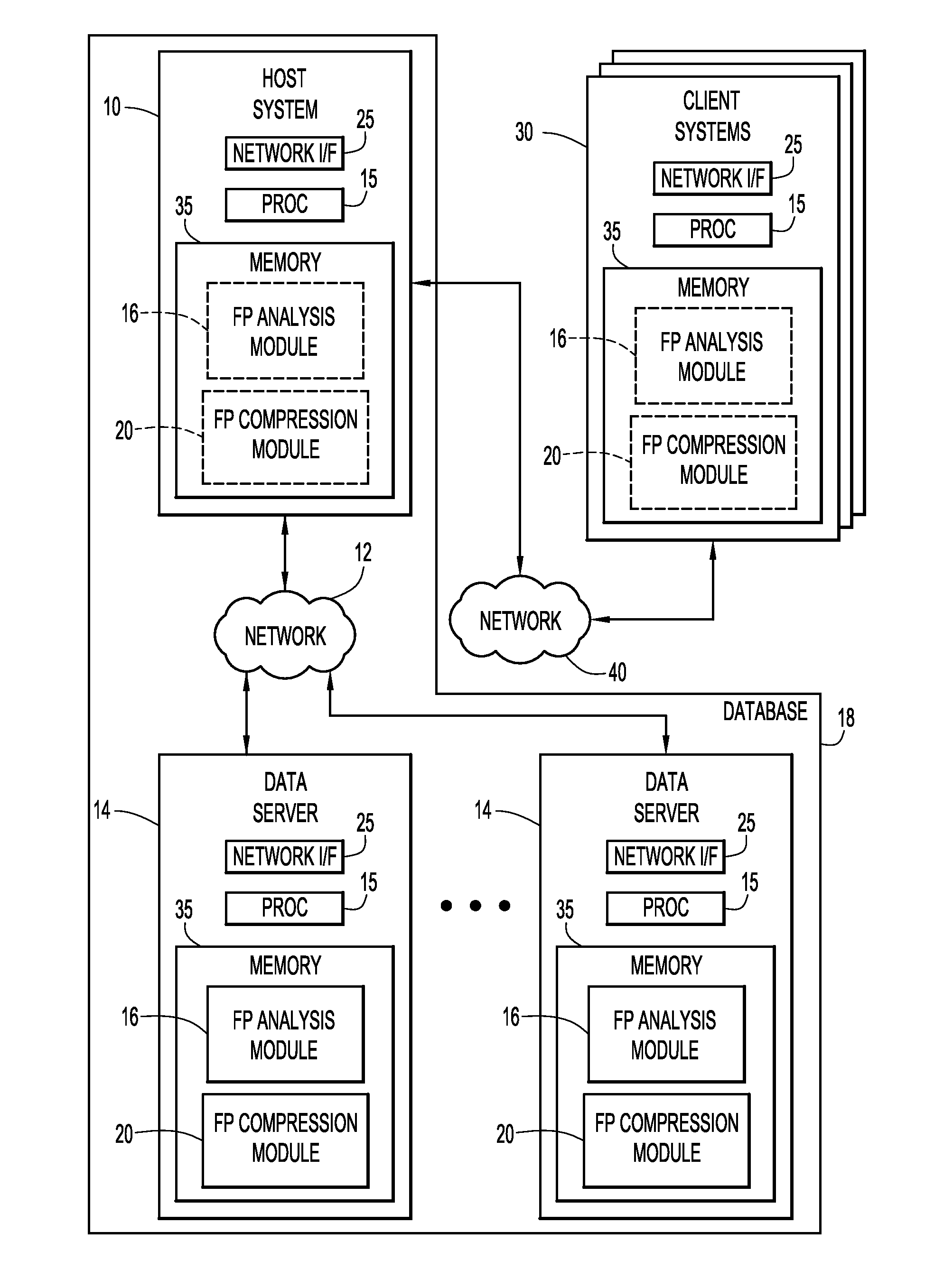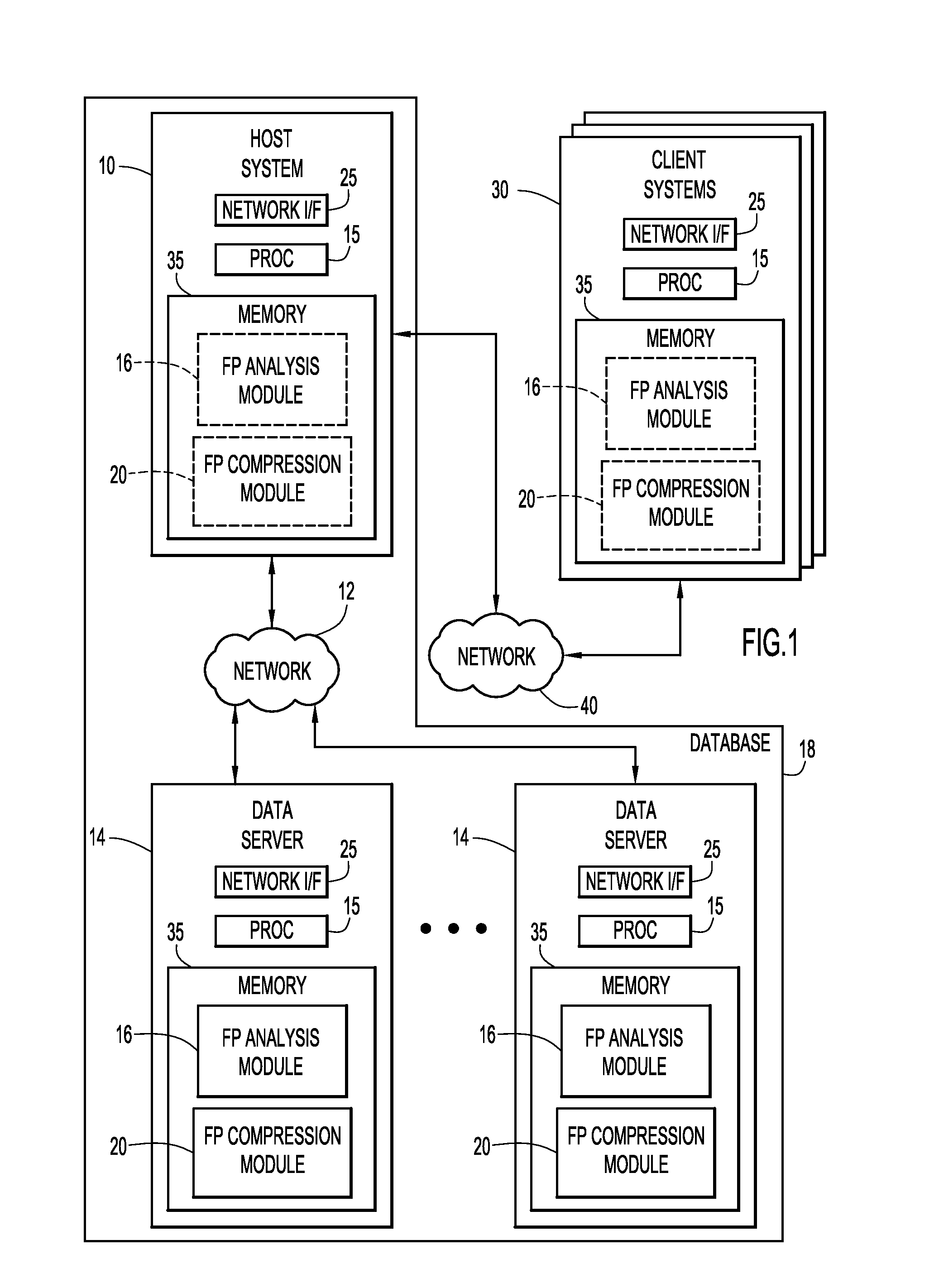Compression of floating-point data by identifying a previous loss of precision
a technology of precision loss and data compression, applied in the field of compressing floatingpoint data, can solve the problems of lossless or lossy data compression techniques, inability to achieve little compression when using integer or character data compression techniques, and high cost of storing large amounts of data for live data retrieval
- Summary
- Abstract
- Description
- Claims
- Application Information
AI Technical Summary
Benefits of technology
Problems solved by technology
Method used
Image
Examples
Embodiment Construction
[0013]Present invention embodiments optimize lossless floating-point compression for storage in a database by compressing components of a series of binary floating-point values (e.g., for rows in a database table). Compression efficiencies may he optimized or improved by way of the techniques described herein by choosing a representation for the floating-point values such that the representation has similar characteristics. For example, characteristics such that the represented floating-point values have the same precision or a similar number of significant digits when trailing zeroes are not considered significant (e.g., 0.1 is not as precise as 0.10). In a simplified example, floating-point values with a precision in tenths of a unit (e.g., x.1, y.2, etc.) may be aggregated for compression, where x and y are integers of like range such that the same number of decimal digits may be used to represent both x.1 and y.2.
[0014]Floating-point numbers may be defined for a variety of digit...
PUM
 Login to View More
Login to View More Abstract
Description
Claims
Application Information
 Login to View More
Login to View More - R&D
- Intellectual Property
- Life Sciences
- Materials
- Tech Scout
- Unparalleled Data Quality
- Higher Quality Content
- 60% Fewer Hallucinations
Browse by: Latest US Patents, China's latest patents, Technical Efficacy Thesaurus, Application Domain, Technology Topic, Popular Technical Reports.
© 2025 PatSnap. All rights reserved.Legal|Privacy policy|Modern Slavery Act Transparency Statement|Sitemap|About US| Contact US: help@patsnap.com



